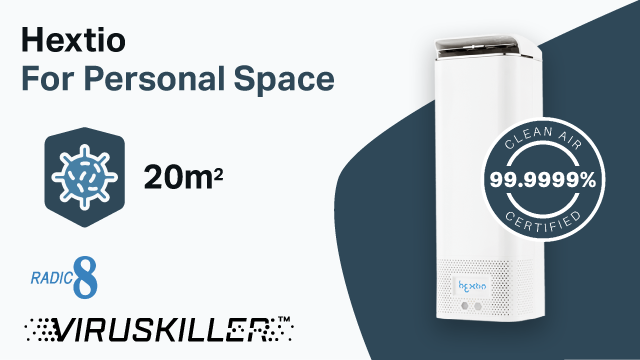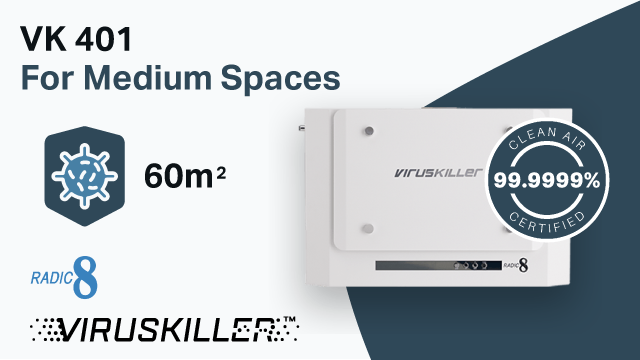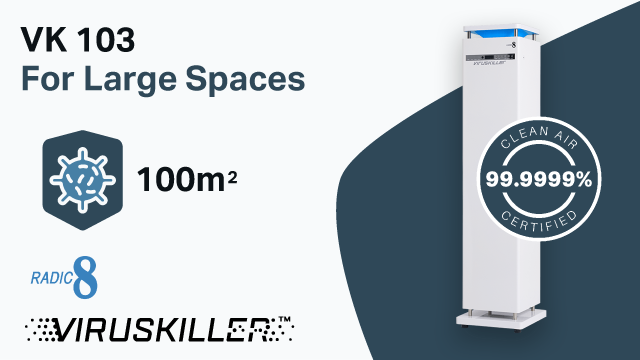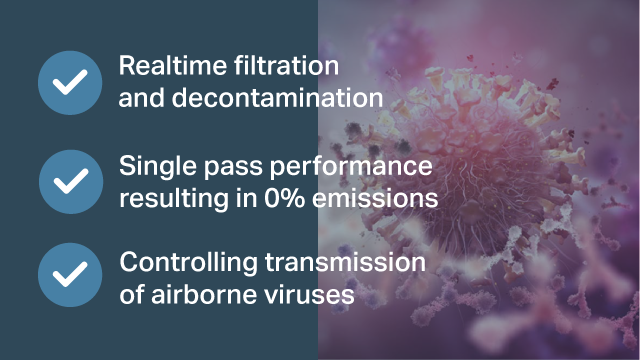7 Reasons Why We Value Indoor Air Quality
With the air temperature in the northern hemisphere finally reaching more Spring-like warmth, the inevitable season of outdoor allergies comes too.
Couple this with indoor spaces such as gyms, cafes and hair salons opening up, and a return to the office environment; it’s easy to see why indoor air quality (IAQ) is now a growing concern for public health and wellbeing within shared indoor spaces.
The necessity for air flow within a public space via mechanical ventilation (outdoor-vented fans and ducted systems) or natural ventilation (open doors and windows) can bring in external pollutants such as vehicle emissions, pollen, radon, exhaust fumes and industrial flues. Indoors, the air quality is affected by more local pollutants including open fires, mould, cleaning chemicals, paint, dust, flooring and work surfaces, office machinery, plastic, and perfumes/room scents.
There are currently no regulations in the UK to control indoor air quality beyond temperature and ventilation, despite considerable research demonstrating indoor air can be more tainted than outside with tangible links to physical (asthma, respiratory diseases and sensitivities) and cognitive (stress, headaches and fatigue) conditions. The National Institute for Health and Care Excellence issued actions for improving IAC for local authorities, healthcare professionals and architects, builders and developers, but these are, as yet, just recommendations.
So, here is why we value indoor air quality:
Productivity has been shown to increase when IAQ is improved. Research in Denmark (Danish Technical Research Council) found clear correlation between better air quality and improved productivity using typing, mathematical addition and proof-reading within a workplace environment. If this is so for offices, it presents a clear case for schools and universities too.
But it’s not only good news for bosses and education results statistics, sick building syndrome leads inevitably to sick people. This has been termed ‘general adaptation syndrome’ whereby constant exposure to indoor environmental pollutants (mentioned in the introduction and including the ozone produced by many commercial air purifiers) has a direct and indirect impact on people’s mental and physical wellbeing. Lack of concentration, fatigue, itching eyes and a general feeling of malaise are all connected to sick building syndrome. Stress racks up when salient cues for the body’s responses are blamed on more obvious, tangible reasons. Autonomic responses to airborn pollutants, that is, our bodies natural reactions, can therefore go unrecognised as the true cause of response. We often say, “I’m under a lot of stress for these deadlines,” or “I’ve got a lot going on at home”, these things we can reasonably believe to be the cause of lack of workplace wellbeing.
Continued exposure to the chemicals we consider essential for our cleanliness and personal presentation and hygiene; when we are exposed to them continually, they can have an effect on our mood, without us realising, creating anxiety and even depression. Put a few dozen workers in an open plan office, or having drinks after work in a stuffy bar with insufficient ventilation and the problem increases. Hair and shaving products, deodorant and perfume contain the same chemicals as cigarettes, but because they smell nice, we don’t mind them. In fact, we expect a certain level of personal presentation from colleagues.
The Indoor Air Quality UK organisation reports that many individuals spend up to 90% of their time indoors and claim fatal consequences of ‘exposure to pathogenic organisms or chemicals.’ We move from home, via enclosed spaces like cars, buses and trains, to our place of work (or, maybe stay home just now), take lunch in another room or a café, then do the same in reverse, possibly feeling too tired to take an evening walk outside or maybe because of caring responsibilities. Modern urban/suburban life has evolved this way. The IAQ UK organisation also seeks to question why modern energy efficiency within buildings fails to address the health and wellbeing of occupants.
We applaud Heatherwick Studios and IM motors for the recent news of their concept car, the AIRO – a car which not only uses HEPA technology for the inside air, but also cleans the air around it. Innovation and progress like this from countries suffering extreme pollution supports our research and the news focus helps educate people further. This is needed as air pollution was recently cited as the cause of death for a young girl in London; many others go unrecognised yet it is a growing issue in urban areas in the UK.
There is compelling evidence to show plexi barriers do not protect against aerosol transmission. See our Twitter feed for more information @4thWaveTech. In the meantime, ask yourself ‘how does air work’; the answer was given by the amazing Fran Leibovitz. If the smoke from a cigarette can drift all ways, so can the covid-carrying aerosol #bemoreFran and be aware of indoor air quality.
In the struggle to protect indoor spaces from Covid-19 with diligent cleaning, we are adding to the list of airborne irritants which may affect those with respiratory issues and chemical sensitivities.
The VIRUSKILLER™ range tackles all four ways of possible contamination: direct and indirect contact, and droplet and airborne movement. Although we focus on the air we breathe, the scientific back-up for our range of air includes a study showing a 99% reduction in pathogen surface settlement; this means less need for chemical-laden cleaning products which in themselves may cause issues for those with asthma and allergies. Given that the average adult, when resting inhales and exhales 13kg or air each day, we value indoor air quality because we value people, their health, and their home/workplace/social space wellbeing.







